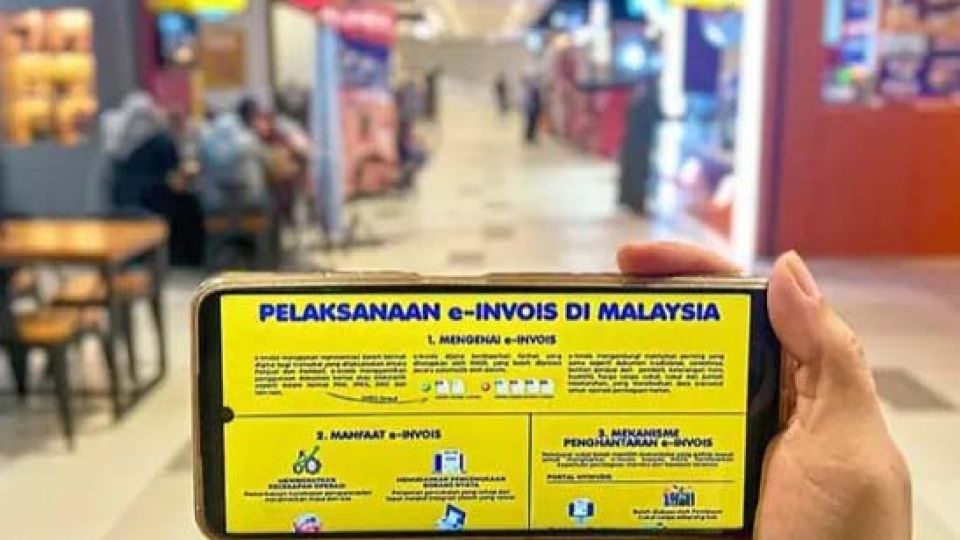July 30, 2024
PETALING JAYA – With two days to go, most of the 5,000 companies under Phase 1 of the e-invoicing rollout are raring to go and looking at a smooth takeoff, say stakeholders.
Associated Chinese Chambers of Commerce and Industry of Malaysia treasurer-general Datuk Koong Lin Loong said these companies, with an annual turnover of RM100mil and above, should not face any major hiccups when transitioning to e-invoicing on Thursday.
“They will be able to cope with the transition as these companies have the resources to do so,” he said when contacted yesterday about worries some businesses have expressed about beginning the e-invoicing process.
Asked if accounting firms acting for these companies are facing pressure in switching to e-invoicing, Koong, who is a practising auditor and licensed tax agent, said that it is unlikely.
ALSO READ: How e-invoicing affects you
“There is some misunderstanding that e-invoicing is like the Goods and Services Tax (GST), which required some companies to change their entire accounting system.
This is not the case with e-invoicing because companies are already generating invoices through email and their existing computing systems. The only difference is that their invoices will now be digitised and linked to the Inland Revenue Board (LHDN),” he added.
Koong also said that it is quite normal for businesses to express worries whenever a new system is introduced, like mobile phone and QR code payments, for instance.
ALSO READ:‘There’s time for smaller companies to learn the new system’
“There would have been a lot of complaints prior to the Covid-19 pandemic (in 2020) if businesses had been asked if ewallets could be used to make payments. They were practically non-existent.
“But nowadays such payments are widely accepted even among smaller businesses and hawkers,” he said.
Experts say the pandemic greatly sped up digital payments globally, as, for a few years, people were living mostly online.
ALSO READ:LHDN announces six-month grace period for einvoicing implementation
When it comes to e-invoicing, the driving force is efficiency in collecting taxes and stopping leakages to increase the government’s tax revenue. To further ensure a smooth transition, Koong said the LHDN has announced some flexibility and relaxation of e-invoicing regulations.
For instance, there will be no prosecution action under Section 120 of the Income Tax Act 1967 for non-compliance with e-invoicing rules, provided the business complies with consolidated e-invoicing requirements.
This means the supplier can gather all statements or bills issued and then issue a consolidated einvoice as proof of the supplier’s income, according to einvoicemalaysia.my.
ALSO READ:Are you ready for e-invoicing starting Aug 1?
Koong added that the LHDN is planning to roll out an e-invoicing mobile app and e-POS (electronic point-of-sale) system by the end of this year, free of charge for businesses to download.
Phase 2 of the e-invoicing system will be implemented on Jan 1, 2025, for companies with a turnover of below RM100mil and up to RM25mil, while full implementation under Phase 3 will begin on July 1, 2025, for businesses with an annual turnover of above RM150,000.
Malay Chamber of Commerce Malaysia secretary-general Ahmad Yazid Othman said most Phase 1 companies are ready, although some may still be facing some difficulties, especially smaller businesses that serve the larger companies under the Aug 1 rollout.
He added that companies are expecting to run into teething problems just as they did when the GST was first implemented in April 2015.
ALSO READ:The e-invoicing dilemma
“The LHDN has given its assurance of some flexibility and relaxation of regulations during the initial implementation period, and this is most welcome.
“We hope that companies will not delay implementing e-invoicing with these assurances, which will at the same time motivate other companies to speed up the transition process when their turn comes,” he said.
Ahmad Yazid, who is also a senior fellow with the Malay Economic Action Council, said the experience gained from Phase 1 of the e-invoicing process will be helpful for both the LHDN and businesses to better prepare for the coming phases next year.

